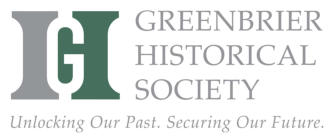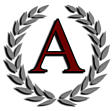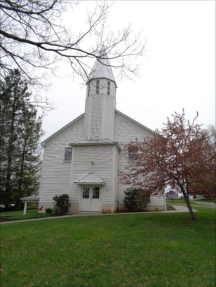















“Alderson’s Longest Running News Media”

Contact:
Executive Director 304-645-3398
Margaret Hambrick, Secretary 304-646-2439
814 West Washington Street
Lewisburg, WV 24910
304-645-3398
NEWS RELEASE
So Much History And Beautiful Homes


Founded
in
1963,
the
Greenbrier
Historical
Society
is
dedicated
to
community
enrichment
through
education
and
preservation
of
the
history
and
culture
of
the
Greenbrier
Valley.
The
Greenbrier
Historical
Society
is
a
regional
organization
that
serves
the
West
Virginia
counties
of
Greenbrier,
Monroe,
Summers,
and Pocahontas.


The
Greenbrier
Historical
Society
cannot
wait
to
have
guests
at
the
opening
event
and
home
tours
of
the
Home
Tour
Weekend
in
the
Frankford/Renick
area
of
the
Greenbrier
Valley.
Dr.
Sarah
McCartney
will
lead
off
with
a
presentation
about
the
history
of
the
“Spring
Creek”
area
at
6:00
p.m.
on
Friday,
June
13,
in
the
auditorium
of
the
New
River
Community
and
Technical
College
with
refreshments
on
the
lawn
at
the
North
House.
The
event
will
conclude
on
Saturday,
June
14
with
the
Home
and
History
Tour
from
10-4
pm.
This
is
a
major
fundraiser
for
GHS
and
virtual
tickets
for
all
events
as
well
as
ticket
packages
are
available
on
the GHS website
https://bit.ly/ghshometourtickets
In
addition
to
tours
of
the
Charles
Stuart
House,
Buffalo
Ridge,
and
the
Bright-Wilson
House,
the
historic
Frankford
Presbyterian
Church
will
be
open
for
visitors.
(Photo:
-Frankford
Presbyterian
Church
erected
in
1855.
Click for larger view)
The
Frankford
Presbyterian
Church
was
organized
in
1853
and
the
building
was
erected
in
1855.
The
building
retains
many
of
its
original
features
including
the
chandelier.
When
State
Route
219
was
built
it
ran
through
both
“the
church’s
hitching
ground
and
over
the
site
of
the
Dowd
School
in
which
log
structure
the
local
church
was
organized
and
in
which
the
Session
often
met
until
1858….”
The
only
grave
in
the
churchyard
is
that
of
Rev.
Samuel
Henry
Brown,
the
first
pastor,
who
was
ordained
and
installed
on
November
23,
1855.
He
was
stricken
by
typhoid
fever
and
died
on
August
1,
1857.
The
balcony
pews
were
for
enslaved
people
and
all
pews
are
original.
Visitors
can
see
the
original
log
floor
joists
and
beams
through
an
opening
in
the
basement.
The
present
congregation
will
be
offering refreshments and visitors may use their bathrooms.
The
Home
and
History
Tour
this
year
offers
two
special
“view
spots”.
The
first
is
the
Bowen-Simmons
House.
Please
drive
by
and
use
your
imagination
to
picture
the
Bowen-Simmons
House
when
it
was
built
by
James
Bowen
in
1822.
This
house
contains
30
windows,
each
with
18
panes,
making
a
total
of
540
panes
of
glass
that
had
to
be
acquired
in
1822.
The
fireplace
mantles
and
window
and
door
facings
are
by
Conrad
Burgess,
noted
local
wood
carver.
The
bricks
for
the
building
were
burned
on
site.
As
the
father
of
thirteen
children,
nine
of
whom
were
daughters,
Bowen
designed
what
amounts
to
two
houses
side
by
side
with
two
front
doors.
He
planned
to
keep
his
daughters
safe
from
suitors
on
one
side
and
himself
peaceful
on
the
other
side.
Daughters
are
ingenious
at
finding
ways
around
fathers
and
soon
all
were married to local men!
The
second
“view
spot”
is
the
Renick
House
or
the
Cave
Farm.
It
is
one
of
the
most
striking
houses
along
Rt.
219
and
sits
on
some
of
the
400
acres
of
choice
farmland
purchased
from
Robert
McClanahan
by
William
Renick,
likely
in
1769
when
he
visited
the
area
in
the
company
of
John
Stuart.
Having
married
Sarah
Hamilton
in
1768,
William
Renick
built
a
log
cabin
and
stockade
fort.
In
1793
or
1794,
they
constructed
a
fine
house
of
native
stone.
Built
around
the
same
time
as
Old
Stone
Church,
it
may
have
been built by the same mason. The inside woodwork is cherry and it had a detached kitchen.
Around
1825,
at
a
time
when
other
stately
brick
houses
were
being
constructed
in
the
area,
a
brick
addition
was
made
to
the
north
end
of
the
house
by
William
Renick
II.
This
addition
is
a
completely
separate
structure
built
against
the
side
of
the
stone
house
and
connected
to
it
by
an
inside
door.
The
brick
structure
has
a
single
large
square
room
on
the
first
floor
with
a
stair
on
the
rear
wall
leading
to
a
similar room above. The woodwork was lavishly carved by Conrad Burgess.
While
visitors
are
in
the
area,
there
are
several
points
of
interest
available
to
explore.
“Old
Renick,”
down
by
the
Greenbrier
River,
will
be
available
to
explore
with
the
help
of
signage
which
identifies
landmarks
from
bygone
days.
The
Renick
Community
Center
will
have
a
photo
and
history
display
to
assist
with
further
learning.
Dr.
Kim
McBride,
Vice
President
of
GHS,
said,
“I
am
so
excited
by
all
the
history
available
on
this
tour.
Who
knew
that
lumber
for
the
largest
desk
factory
in
the
country
was
processed
in
Renick?”
Visitors will also be welcome at Falling Springs Vinyard.
Food
will
be
available
at
Mountain
Table
and
the
Good
Roads
Bakery
in
the
immediate
area
as
well
as
all
the fine, award winning restaurants in Lewisburg.
More
information
and
virtual
tickets
are
available
online
on
the
GHS
website
with
a
discount
for
early
purchase.
Visitors
who
have
purchased
tour
tickets
can
claim
their
wrist
bands
and
brochure/map
at
any
site
and
sites
can
be
visited
in
any
order.
Day-of
tickets
can
be
purchased
by
cash
or
check
at
any
site
or
by credit card at the North House Museum or by logging on to the GHS website by phone.
